Shrewsbury: the town where independents are keeping the high street buzzing
Regular readers will know that I visit a lot of British high streets – including more than 400 different ones in the last four years – but it’s usually on my own, and rarely for very long in any one place (which, in a very few unfortunate cases, is admittedly a blessing).
So, it was a pleasure last month to not only have the opportunity to spend a whole day exploring the historic town of Shrewsbury, but to do so with a well-informed and affable guide in the shape of Sam Stockley – a local retail expert who handles the marketing for his mother Elizabeth’s independent fashion boutique, seems to know everything that’s going on in the town, and regularly shares interesting and insightful retail-related updates via Twitter (@stockersretail).
A modern town shaped by its history
Arriving by train as I did, the first thing that strikes you is that Shrewsbury is a town packed with heritage. Turn around as you exit the station and you realise what a magnificent building it is: a Grade II Listed Tudor-style edifice, built in 1848, that looks more like a private school or National Trust mansion than your everyday railway station.
Meanwhile, to the left, Shrewsbury’s castle sits proudly atop its mound, while Castle Gates is a street that winds steeply up to Castle Street – home to the lovely ex-Shrewsbury Co-op building – and, in turn, to the main pedestrianised street of Pride Hill.
Or, follow the River Severn around, and you reach the historic Quarry park, with its beautiful Dingle flower gardens.
As you’d expect, all these layers of history help make the town an attractive and popular destination for tourists. As Sam pointed out to me, however, Shrewsbury’s historic form has also fundamentally influenced how it functions as a modern-day retail centre – with an offer that is surprisingly, but refreshingly, independent-heavy for a town of its size.
“Shrewsbury’s principal strength is that it has good diversity in independent shops”, explains Sam. “Recent openings – and there have been many – are cleverly exploiting gaps in the local chain-store market, while doing what independents always should do: seeking out stock you won’t find elsewhere on the High Street.”
“I feel there is a particularly good focus on house and home, but there is a great selection of fashion, footwear, food and drink, gifts, stationery, galleries and outdoor shops – in addition to great independent cafés and eateries, an award-winning Market Hall, and our monthly farmers’ or ‘Made in Shropshire’ markets.”
“I’d say this diversity has a lot to do with the town’s geography and historic environment: the town is perched on a hill almost entirely surrounded by a meander of the River Severn. Small, historic shop units on the hilly approaches into town, for example, have helped to cap rents and dissuade national retailers from these streets, while footfall remains relatively high on these principal approaches.”
Innovative independents
Certainly, many of the Shrewsbury independents that Sam showed me were impressive. On Castle Gates, for example, the lovely, rich frontage of Pomona – a quirky and keenly priced local grocer – immediately catches the eye, and successfully communicates the shop’s status as a local foodie heaven.
Nearby, The Shrewsbury Coffeehouse is a delight, easily matching the quality and instore environment of the big-name chains, but offering a much more unique and fulfilling experience through its warm service, locally roasted coffee blends, and enticing programme of tasting events.
And while Sam would be too modest to point it out, his mum’s ladies’ fashion business – ZigZag, in the independent-focused Parade shopping arcade – is also really strong, with a lovely, unusual product mix sourced from all over the world, and a neutral backdrop to the shop that really lets the colourful stock shine.
While many Shrewsbury indies, like Pomona and The Shrewsbury Coffee House, benefit from a prominent street frontage and passing trade, the Parade is a slightly harder sell. Housed in the handsome former building of the Royal Salop Infirmary, the Parade is a little tucked away, somewhat away from the main shopping streets, with rather underwhelming external signage. Meanwhile, the front-of-house car park and a strange security cabin inside the entrance portico potentially act as barriers to encouraging pedestrians in.
Still, it seems to work as a centre for new or small independent retailers: the rents are affordable, there’s a track record of Parade businesses moving on to bigger premises elsewhere in the town, and there’s currently only one of the 30 shop units being advertised as to let.
In the case of ZigZag and others, however, promoting their physical stores online – such as through Twitter (@ZigZagEliz) and content websites – has been crucial in helping to counter the inherent disadvantage of an off-pitch location. Indeed, ZigZag’s Elizabeth told me that a customer had recently visited from Newcastle, having seemingly heard about the shop through one of my retweets.
Capitalising on the potential of social media to market physical businesses is something that Sam – like me – is passionate about, highlighting the benefits not just in terms of reaching customers but also in building a community of independent retailers that can work together to share ideas and promote a destination. Indeed, as well as providing marketing support to his mother’s business, Sam is currently working with several other retailers and organisations in Shrewsbury to enhance their online presence.
“Social media is utilised by many Shrewsbury businesses”, he confirms. “Over 100 town centre shops, stalls and eateries are now active on Twitter, for example, and there is undoutedly evidence of collaboration that may not have been so actively pursued were it not for businesses communicating on social media.
“I feel it’s useful to use Twitter even if it solely helps remind other businesses of your presence and your offer, allowing the community to refer business to one another; customers attach similar worth to referral of other shops by retailers as they do by their friends.”
“I do believe, however, that social media works best in tangent with a web presence, allowing an intermediary destination between the intrigue piqued by a tweet and the ultimate destination and aim, which is to encourage business into a physical shop.”
Malls in needs of some love
If Shrewsbury’s independent retail offer is strong – and benefits from some of the best locations and most beautiful buildings – the town’s provision of multiples isn’t quite as compelling.
There are strengths, for sure: the town’s House of Fraser store – still branded as Rackhams – remains an important if compact anchor; the closure of Woolworths (more of which in a future post) gave H&M and Home Bargains the chance to divvy up one of the town’s biggest units (over 20,000 sq ft); and the Jessops in Mardol – one of two branches in Shrewsbury prior to the camera chain’s administration – is one of only 25 Jessops shops to have reopened so far under the new ownership of Dragons’ Den star Peter Jones.
Beyond the busy thoroughfares of Castle Street and Pride Hill – which house prominent names such as Marks & Spencer, Boots, Cotswold, Paperchase (in the former Virgin unit), Mountain Warehouse and a two-year-old Little Waitrose – the bulk of Shrewsbury’s multiples are housed in three covered malls that are physically separate from each other but under common ownership: the Pride Hill, Darwin and Riverside shopping centres, branded collectively as ‘Shrewsbury Shopping’.
All the centres do benefit from strong anchors – M&S, H&M and Topshop in Darwin; Next in Pride Hill; and Wilkinson in the more value-focused Riverside – and there are curiosities too, such as the Darwin being home to one of only two QVC Outlet Stores in the UK. It’s an unusual twist, you might say, on the idea of multichannel retail, with the digital turned physical.
Overall, however, there’s a noticeably higher proportion of empty units in the shopping centres than there are in the surrounding streets.
In some cases this is due to the impact of nationwide retail collapses – such as the hole left by TJ Hughes in the Riverside – but the uncertainty and lack of investment that has stemmed from years of changing ownership and stalled redevelopment plans has surely not helped, especially in the Riverside centre, where retailers have already been moved out to make way for its planned demolition.
“The current centres are tired and ill thought out, with poor vertical circulation”, Sam agrees. “I’d even go so far as saying the lower levels of each are dingy. The case for redevelopment is a good one; there has long been a desire to link Darwin and Pride Hill, the two principal centres. At present, only an informal link exists that involves negotiating a three-storey descent to ground level and up again.”
“The ongoing failure to press ahead in linking the centres has, however, done some harm to the latest proposal by the third set of owners in a decade. The current redevelopment proposal was, tellingly, well received, with 87% of 676 consultees to a public exhibition being in support of the scheme.”
“I believe the principal advantage of the proposed New Riverside scheme is in linking the two main centres via a new pedestrian circuit. Debenhams has signed for a full-line store [currently Rackhams is the town’s only department store] and there is space for a restaurant terrace and 50 further shops. It was recently mooted that a cinema was being planned, which would be welcome – at the moment, there’s no town centre multiplex.
“There is said to be a two-year delay to the project, pushing opening back to 2017. This is damaging. However, if the plans are being reworked to be more pragmatic – such as by the inclusion of a cinema – then this is more than worth the delay. Bringing cinemagoers back to the town centre from out-of-town would be transformational.”
One danger, of course, is that any new shopping centre development – while bringing welcome investment – risks creating voids in other parts of the town as retailers and footfall shift to the shiny new additions. Is Sam worried that moving the retail centre of gravity towards the planned Debenhams on the riverside may have a negative impact on Shrewsbury’s established – and generally thriving – shopping streets? He argues not.
“I’m not concerned that the new centre will draw the life either from the existing centres or from Shrewsbury’s streets, damaging its independent shopping culture. Principally, the fact that the shopping centres are commonly owned means there is no incentive to clear out the old in favour of a newer extension.
“Similarly, national retailers that do vacate smaller shop units on the street in favour of larger, modern units will allow independents greater options to expand – an issue which is becoming very prevalent once again for traders. Despite vacant units increasing in a recession, the lack of quality supply is stopping successful businesses expanding and new businesses starting up in the lower-cost premises vacated.”
“One reflection of the demand to start trading in Shrewsbury is that the Market Hall has 200 interested parties on its waiting list for a stall. So, I very much see the shopping centres as helping to solve the overall retail property problem in the town.
“On a wider point, there is no doubt that 50 new shops will transform the rather poor ‘high street’ offer of a town with a sizeable ‘borough’ population (approx. 105,000) and an extensive shopper catchment of 440,000, as well as a wider catchment extending westwards into mid-Wales and with an expanding visitor economy.”
Other positive developments
While Shrewsbury may have to wait until 2017 – at the earliest – for the New Riverside scheme to open, Sam points to several other initiatives and investments that are already set to bring benefits to the town.
“On the site of earlier proposals to link the two main centres, a 452-space multi-storey car park has recently been granted planning permission and could open in 2014. Given that parking is such a contentious issue nationwide and that new multi-stories are rarely delivered outside of major redevelopment schemes, this is a notable and hopefully positive development for the town.”
“Elsewhere, a collection of buildings fronting the historic Square, which previously housed the town’s theatre, is being repurposed for use as the county’s Museum & Art Gallery. Scheduled to open late this year, it will bring a new cultural hub to the heart of the town. Carluccio’s now having signed just two doors down already indicates some recognition of the importance of this opening.”
“And a proposal to create a Business Improvement District is in full swing – it’s presently at the business plan inception stage, with a ballot expected in the autumn.”
At a time when markets and festivals are being championed – including by Mary Portas – as a way for towns to bring new vitality to their streets and public spaces, Sam is clear that events is another area where Shrewsbury already has a position of real strength.
“Shrewsbury does events well. It’s in its blood: the Shrewsbury Flower Show celebrated its 125th anniversary last year. In recent years, however, the number of events has exploded and I can see this continuing to support the local economy – encouraging repeat visits and making town and county a great place to live.
“The International Cartoon Festival is in its 10th year, the Shrewsbury Festival for live music and comedy is in its third year, and the Folk Festival – having outgrown Bridgnorth 20 miles away – celebrates its eighth year in Shrewsbury this summer. The inaugural Food Festival took place in June, showcasing local producers, craftspeople and restaurateurs.”
Similarly, as Mary Portas argues for high streets that are “re-imagined as destinations for socialising, culture, health, wellbeing, creativity and learning”, and “where shopping is just one small part of a rich mix of activities”, Sam is clear that Shrewsbury is well placed to deliver that richer experience – not least in the diversity of its places for residents, shoppers and visitors to eat.
“Travelling around, I realise that Shrewsbury is good for eating out. It can be pricey, but a new generation of eateries has opened to fill a ‘middle market’, too. Chains are few and far between, which is refreshing for visitors if, at times, frustrating for residents.”
“However, the quality of the fare on offer in our independents is fantastic and this key attraction is a good reason for visitors from the wider catchment to come and spend the day in Shrewsbury over other market towns or Telford Shopping Centre – which is presently starved of both eating places and independents.”
Challenges
Just like other towns, however, Shrewsbury faces its fair share of challenges – including dealing with the ongoing challenge to the town centre from a relatively small, but growing, out-of-town retail offer.
“The march of out-of-town development is a threat in Shrewsbury as it is a threat anywhere”, agrees Sam. “Luckily, there is no ‘shopping park’ focusing on fashion, though one retail park to the south – Meole Brace – is starting to move in this direction, with TK Maxx taking the former Focus, and Next upgrading its store shortly to a Next Home in the former Comet.
“Similarly, applications to build an M&S Simply Food and Asda Supermarket are forthcoming, while the town centre – beside its brilliant Market Hall – struggles for grocery provision, served only by its Little Waitrose and M&S Food Hall.”
Overall, though, it’s clear that Sam is passionate about his adopted hometown and upbeat about its prospects – thanks in no small part to modern, enterprising, independent retailers like his own mother.
“As ‘old-school’ retail retires, new blood has undoubtedly breathed new life into the shopping experience in Shrewsbury – with new retailers thinking more laterally about brand, product and merchandising.”
“There’s been a lot of change that I’ve observed in the eight years since moving here – but I’m happy to say that it’s been for the better.”
Certainly, while its shopping centres and multiples somewhat underwhelm, Shrewsbury really impressed me with the strength, richness and buzz of its independent retail, café and restaurant offer – as well as with its impressive schedule of events and sheer appeal as a lovely place to visit and explore.
Whether the New Riverside will be finished – or even started – is anyone’s guess, but I’m pretty sure I’ll be back in Shrewsbury before long.
My retail consultancy business, CannyInsights.com, helps retailers make their businesses even better: critiquing websites’ appearance and usability, creating and improving web content, proofreading web copy, and helping independent shopkeepers get to grips with social media. For more information on how CannyInsights.com can support your business, visit www.cannyinsights.com, drop me an email, or give me a call on (0191) 461 0361.



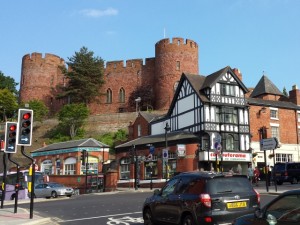
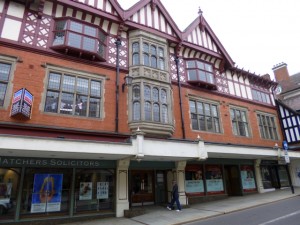
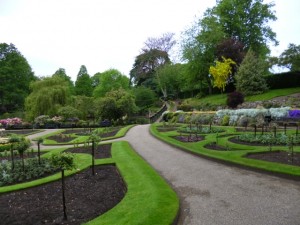


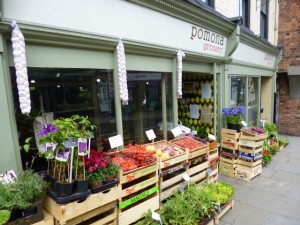


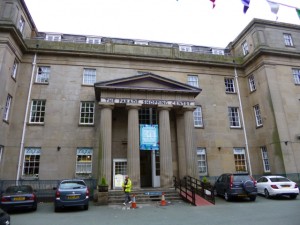

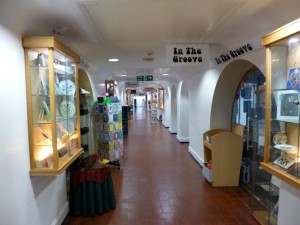




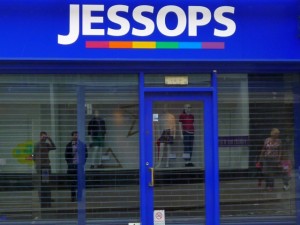
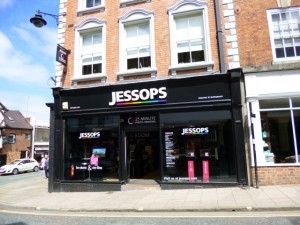


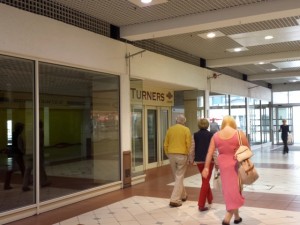



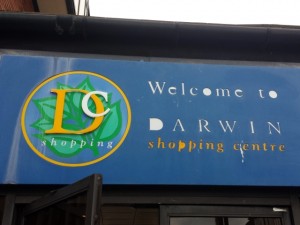


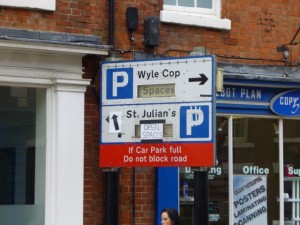

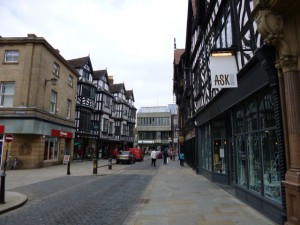


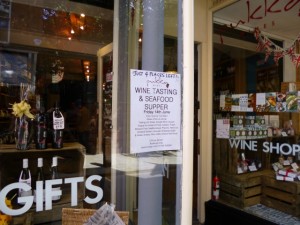


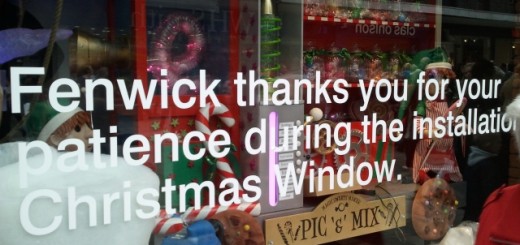
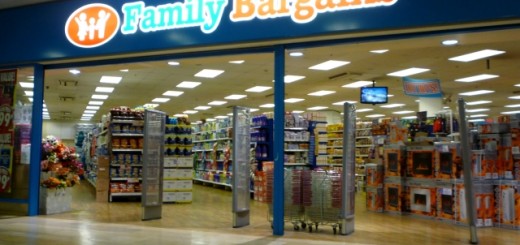
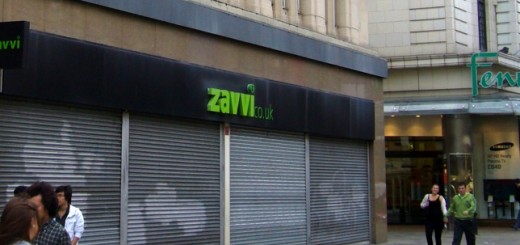




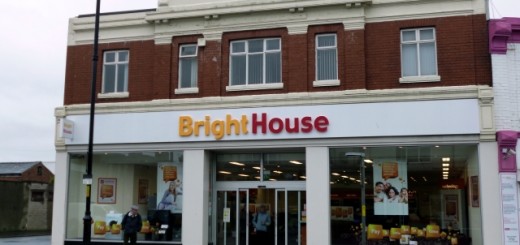
What about pubs?
Please update your comments and pictures about the Music Hall which is now an exciting museum and has a really good cafe.
The point of a blog is that it is a snapshot in time – but readers will be able to see your comment!
Glad to see the Rackhams name survives and hasn’t been rebranded